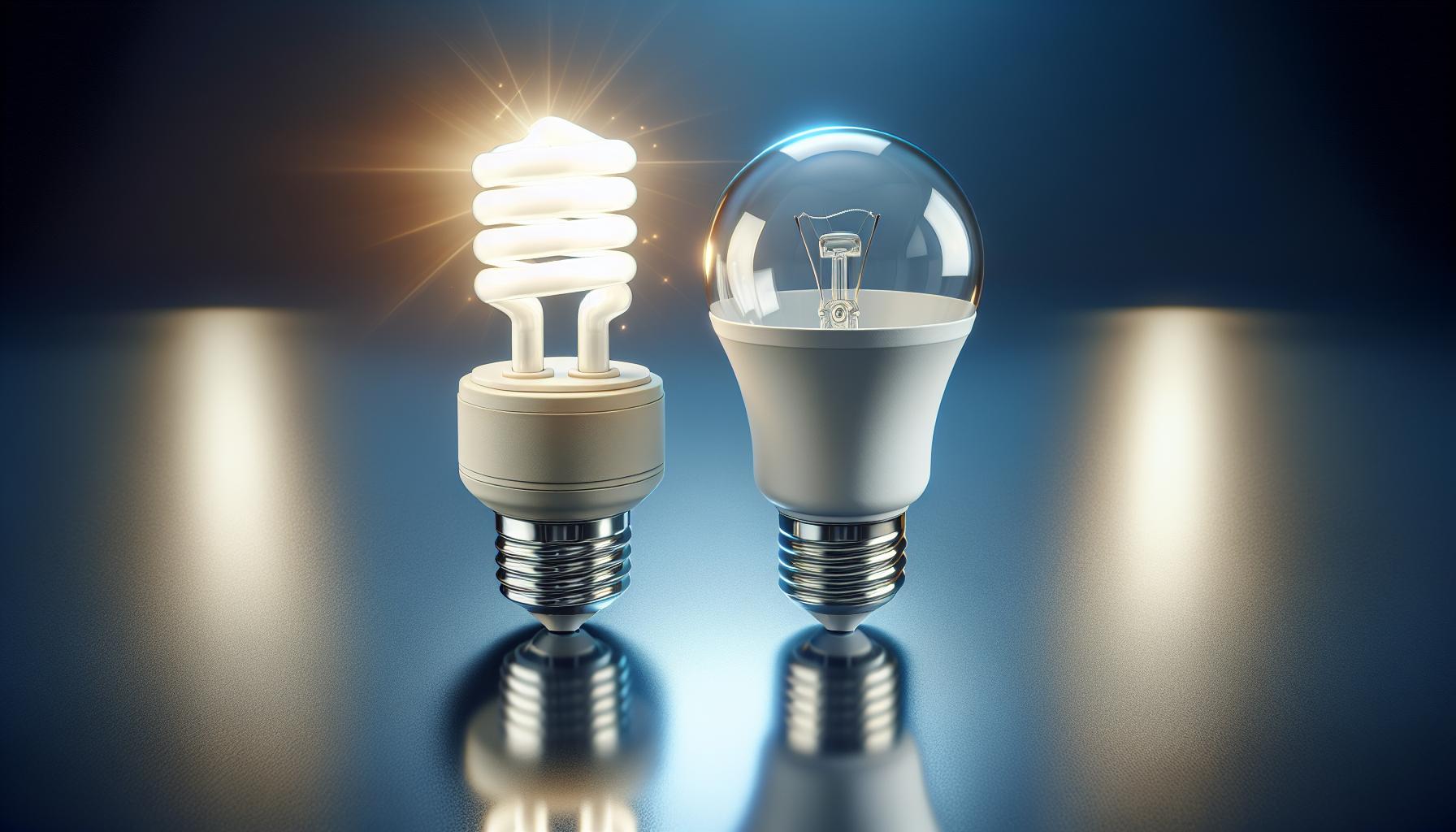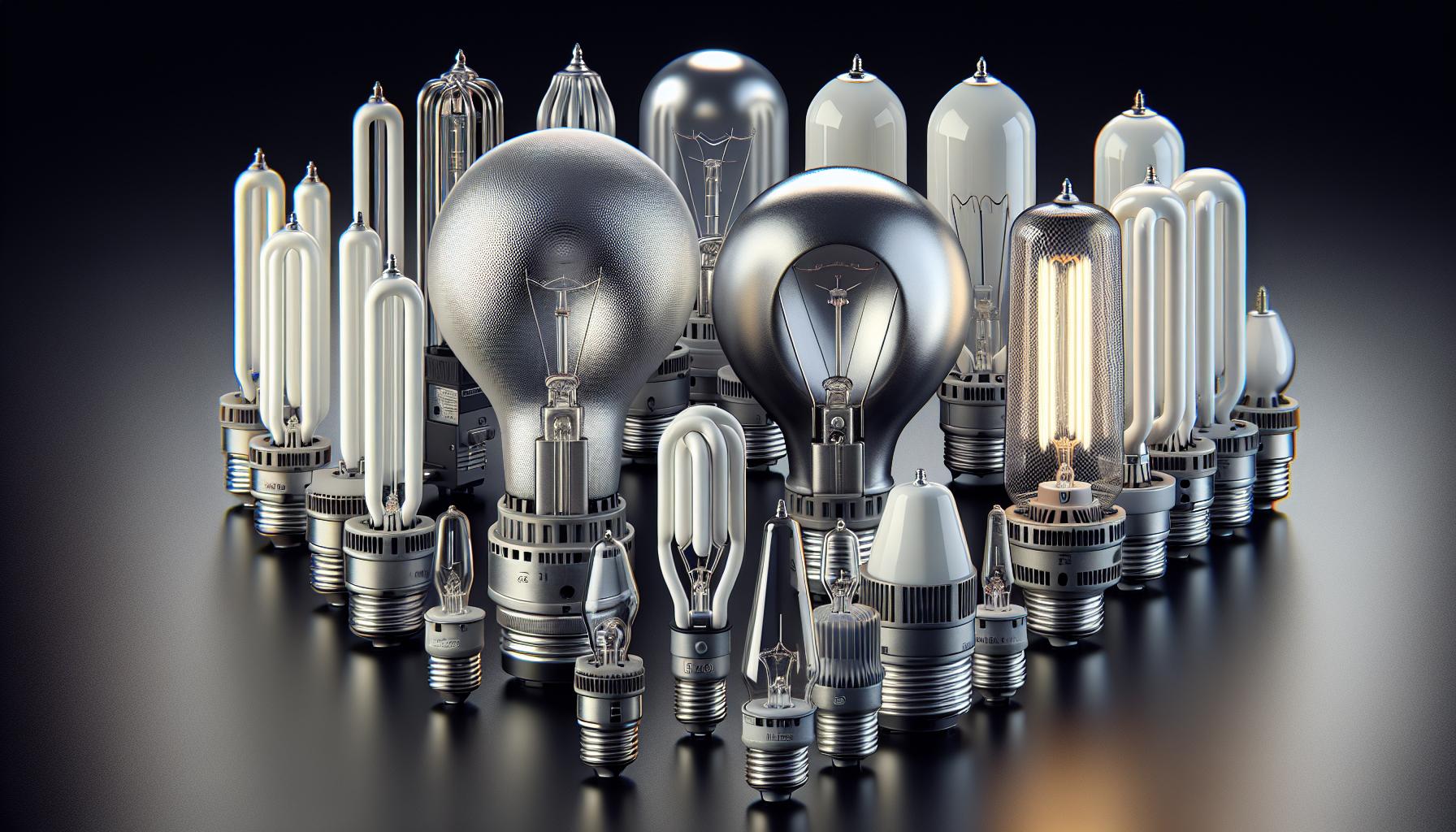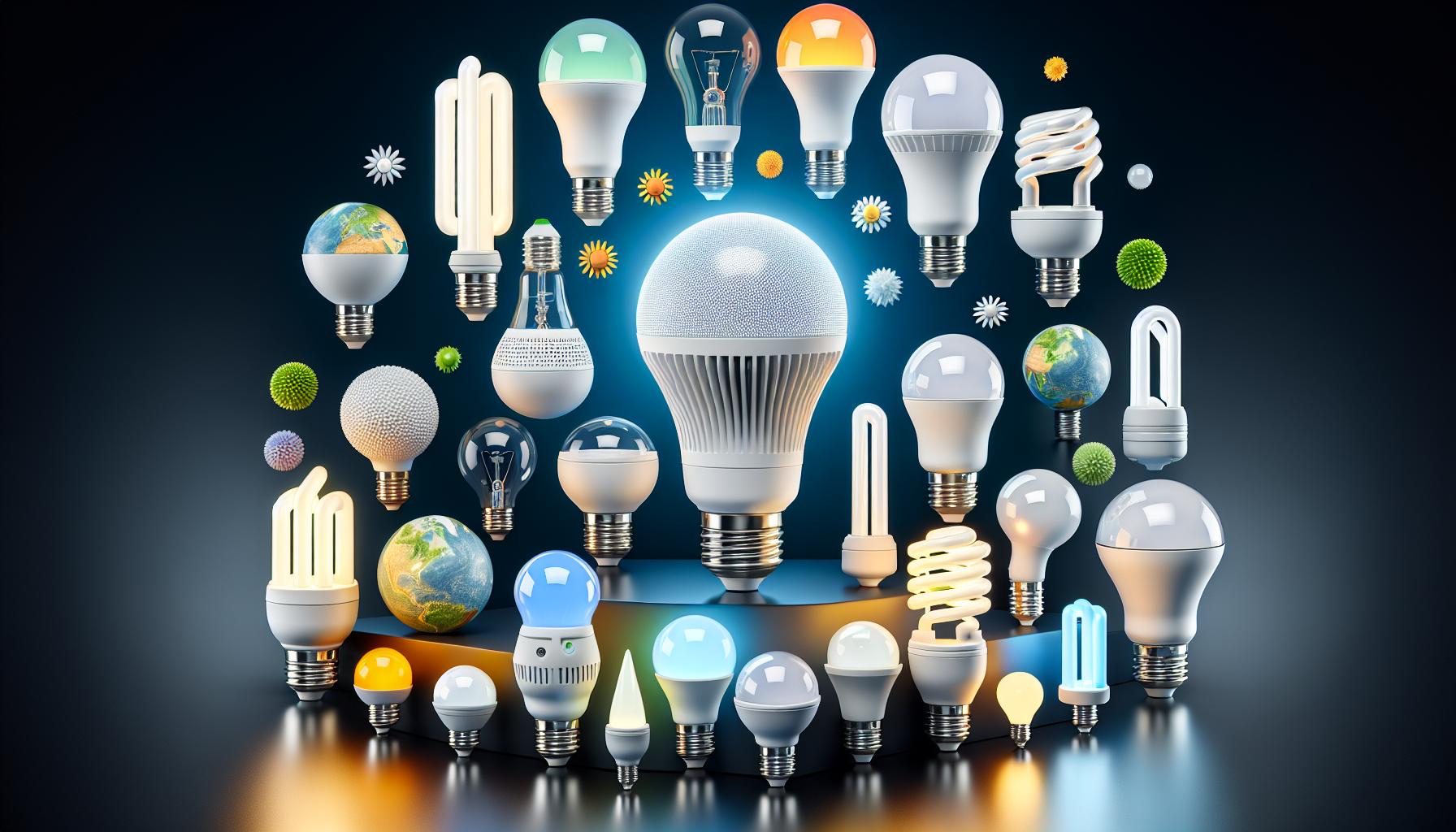Ever wondered why you’re cautioned to handle certain light bulbs with care? It’s because some contain mercury, a necessary evil for their efficient glow. But not all bulbs are created equal when it comes to this toxic element.
You’ve likely heard the buzz about energy-saving lights, but with that comes the mercury question. It’s important to know which bulbs to be mindful of, especially when they reach the end of their life cycle. Let’s shed some light on the types of bulbs that contain mercury, so you can make informed decisions for your home and the planet.
The Danger of Mercury in Light Bulbs
When you’re knee-deep in your latest home DIY project, it’s crucial to be aware of the materials you’re working with, especially when they can pose a threat to your health and the environment. Mercury in light bulbs is a hidden hazard that often goes unnoticed. This shiny, liquid metal is essential in certain types of bulbs, but it’s also highly toxic, affecting both brain function and the nervous system if exposure occurs.
Particularly in the case of compact fluorescent lamps (CFLs) and some fluorescent tubes, mercury is used to emit light when an electric current passes through it. While the amount of mercury content in these light bulbs is relatively small—generally around 4 milligrams—it’s enough to cause concern if a bulb breaks. Mercury can then be released as a vapor or can contaminate the immediate environment, providing a silent but significant risk.
Handling these bulbs with care is vital for your safety and that of your loved ones. Equally, it’s important to follow proper disposal guidelines. Most local waste agencies provide specific instructions on how to dispose of mercury-containing bulbs safely, thus preventing the risk of mercury release into landfills and the subsequent contamination of soil and water channels.
Due to its serious implications, many organizations and governments are pushing towards a shift to mercury-free alternatives. Light-emitting diode (LED) bulbs and some halogens offer a safer and equally efficient lighting solution. Here are some key comparisons:
| Bulb Type | Contains Mercury? | Average Lifespan | Energy Efficiency |
|---|---|---|---|
| Compact Fluorescent (CFL) | Yes | 8,000 Hours | High |
| LED | No | 25,000 Hours | Very High |
| Halogen | No | 1,000-3,000 Hours | Low to Moderate |
Arming yourself with this knowledge can significantly reduce your exposure to mercury, ensuring your DIY projects stay fun, safe, and environmentally responsible. Remember, every light bulb you choose impacts not only the cozy corners of your home but also the broader canvas of the ecosystem.
Types of Light Bulbs that Contain Mercury
If you’re a DIY enthusiast with a passion for lighting, knowing which bulbs are eco-friendly is essential for your projects. Let’s shed some light on which types of bulbs contain mercury, so you can make informed choices for your home.
Compact Fluorescent Lamps (CFLs) have been popular due to their energy efficiency. Inside each twisty tube is a small amount of mercury vapor—that’s the key to making them glow. Despite their eco-friendly energy consumption, it’s this mercury content that requires careful handling and disposal.
Fluorescent Tubes, the long, linear bulbs often found in kitchens and garages, also contain mercury. They work similarly to CFLs and are even used in large quantities in commercial spaces. When you’re thinking about swapping these out or if one breaks, remember that the mercury inside needs to be managed with care.
If you’ve got a more powerful lighting need, High-Intensity Discharge (HID) Bulbs come into play, particularly in outdoor and warehouse lighting. They’re powerful and efficient but guess what? They’ve got mercury too. You’ll typically find these in places that require strong, direct light, like street lamps or stadium lights.
Even the bulbs that mimic natural light, Tanning Bed Lamps, need mercury to function. They give that sun-kissed glow indoors but just like their counterparts mentioned before, come with the mercury caveat.
Lastly, let’s not forget about Neon Lighting. Known for its bright, vivid colors in advertising signs and art installations, neon lighting requires a small amount of mercury to produce that iconic neon glow.
« What Are Light Bulbs Used For in FarmVille 2? Illuminate Your Gameplay
What Size Light Bulb for Ceramic Christmas Tree: Brighten Up Your Holidays »
As you replace or dispose of any of these bulbs in your home projects or recommend them to others, it’s crucial to keep their mercury content in mind. You’re not just contributing to a well-lit home; you’re participating in a larger environmental effort. Always ensure safe handling and look out for local recycling programs specifically designed for these types of bulbs.
Compact Fluorescent Bulbs (CFLs): A Common Mercury Culprit
When you’re tackling your home’s lighting, chances are you’ve encountered CFLs or Compact Fluorescent Lamps. These energy savers have been a go-to for homeowners like you trying to reduce the electric bill. But, there’s more to them than just energy efficiency. CFLs contain a small amount of mercury—essential for their ability to emit light.
Understanding the role of mercury in CFLs is crucial. It’s what makes them different from the ol’ incandescent bulbs. Mercury vapor inside the bulb becomes excited when electrical current passes through, producing ultraviolet light. This, in turn, hits the phosphor coating inside the glass tube, which then emits visible light. CFLs use about 70-80% less energy than their incandescent counterparts and can outlast them by up to 10 times. But with mercury being a toxic substance, it’s vital you know how to handle these bulbs with care.
So you’ve got these CFLs throughout your DIY lit home. But what happens when they burn out? Your role in environmental protection kicks in here. It’s not just about replacing the bulb but doing so responsibly. It starts with safe cleanup and ends with proper disposal or recycling. You’d want to minimize any mercury release that could occur if a bulb breaks. If you’re not sure about how to go ahead with this, your local waste management authority can usually provide guidelines.
Remember, different bulbs contain varying amounts of mercury. Here are some quick numbers to give you an idea:
| Bulb Type | Mercury Content |
|---|---|
| CFLs | 3-5 milligrams |
| Fluorescent Tubes | 4-12 milligrams |
| HID Bulbs | 10-50 milligrams |
Armed with this knowledge, you’re not just illuminating your space but also maintaining a keen eye on how your choices impact the environment around you. And while CFLs are found in many homes, shifting towards LED technology can give you similar benefits without mercury concerns. LEDs might be the next step in your home lighting evolution, merging your love for DIY projects with an eco-conscious mindset.
High-Intensity Discharge (HID) Bulbs: A Lesser-Known Mercury Source
When you’re exploring lighting options for your home, office, or even your latest DIY project, you’ve likely encountered high-intensity discharge (HID) bulbs. HID bulbs are prevalent in various settings, including automotive headlights, street lamps, and industrial lighting. They’re known for their impressive brightness and efficiency. But did you know that HID bulbs are also a mercury source?
HID bulbs function by passing an electric current through a gas-filled tube, which often contains mercury vapor. This mercury is integral for the bulb’s ability to produce light. That said, the mercury content in HID bulbs makes them a concern when it comes to environmental and health safety.
Let’s break down the types of HID bulbs to give you a clearer picture:
- Metal Halide Bulbs: Common in stadiums and warehouses, these bulbs provide intense white light. They contain a small amount of mercury.
- High-Pressure Sodium Bulbs: These are often found in street lights and emit a warm amber glow. Although they contain less mercury than metal halide bulbs, it’s still present.
- Xenon Short Arc Bulbs: Utilized in movie projectors and some car headlights, these have a different technology but still use mercury.
Mercury levels can vary depending on the bulb. Below is a table showing typical mercury content for different HID bulbs:
| Bulb Type | Approx. Mercury Content (milligrams) |
|---|---|
| Metal Halide | 15-400 |
| High-Pressure Sodium | 15-50 |
| Xenon Short Arc | 2-30 |
Given the mercury content, it’s crucial to handle HID bulbs with care, especially if one breaks. Open windows and ventilate the area thoroughly to minimize mercury exposure. Remember to recycle these bulbs properly to prevent mercury from entering the environment.
When you’re thinking about your lighting needs and considering the environmental impact, it’s useful to look toward LED options. While HID bulbs are great for their specific uses, LEDs offer a mercury-free solution that is both energy-efficient and long-lasting. They’re a win-win for your home projects and the planet.
LED Bulbs: Mercury-Free Lighting Alternative
If you’re passionate about DIY home projects and looking to make a lighting change, you’ve probably considered the impact of what’s inside your light fixtures. While HID bulbs have their purposes, the mercury content is a downside you simply can’t overlook. That’s where LED bulbs come in as your eco-friendly champions.
Unlike HID bulbs, LEDs (Light Emitting Diodes) harness the power of semiconductor technology to generate light—no mercury required. This means you get to light up your favorite reading corner or spotlight your latest kitchen upgrades without compromising the environment or your health. Here are key benefits you’ll love about LEDs:
- Energy Efficiency: LEDs use up to 75% less energy than traditional incandescent bulbs. This could translate to noticeable savings on your electricity bill.
- Longevity: Expect LEDs to last up to 25 times longer than incandescent bulbs. Imagine the convenience of changing your bulbs far less often.
- Diverse Selection: Whatever the mood or setting, there’s an LED bulb for you. From warm yellows for a cozy vibe to bright whites for your workspace, LEDs offer an impressive range of colors and temperatures.
- Immediate Illumination: LEDs light up instantly at the flip of a switch. No annoying delays or warm-up times.
As you think about updating your space or simply keeping spare bulbs on hand, consider how LEDs are not only safer for the planet but also for your home. Some HID bulbs can be fragile, and a break could mean a tricky cleanup. LED bulbs are generally more robust, and without the mercury, a broken bulb isn’t a miniature disaster zone.
Embracing LEDs could be your contribution to a safer, cleaner, and more sustainable world. Think about the long-term benefits: fewer bulb replacements, a significant decrease in energy use, and a step away from toxic materials. Whether you’re illuminating an art piece or guiding your way down a dark hallway, LEDs offer a reliable, mercury-free solution that matches both your practical needs and creative endeavors.
Conclusion
So there you have it—you’re now well-versed in the reasons to switch to LED bulbs. You’re making a choice that’s not only smart for your wallet but also kind to the planet. It’s clear that the benefits of LEDs extend far beyond just saving a few dollars. By choosing them, you’re stepping into a brighter, more sustainable future, free from the worries of mercury in your home. Remember, every small change you make can have a big impact. Happy lighting!
Frequently Asked Questions
What are the environmental drawbacks of HID bulbs?
HID bulbs contain mercury, a hazardous material that poses risks to the environment when disposed of improperly.
Why are LED bulbs considered safer than HID bulbs?
LED bulbs are mercury-free, reducing the risk of contamination and making them safer for home use and the environment.
What are the main benefits of LED bulbs over HID bulbs?
LED bulbs offer energy efficiency, longer lifespan, a wide variety of options, and instant lighting without the need for warm-up time.
How do LED bulbs impact energy consumption?
LED bulbs consume significantly less energy compared to HID bulbs, leading to lower electricity bills and a smaller carbon footprint.
Can switching to LED bulbs really save money in the long run?
Yes, due to their longevity and energy efficiency, LED bulbs lead to fewer replacements and reduced energy costs over time.





